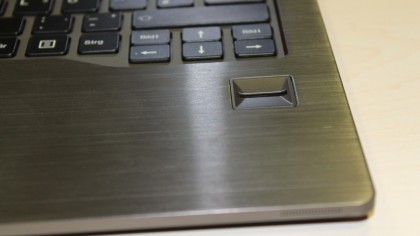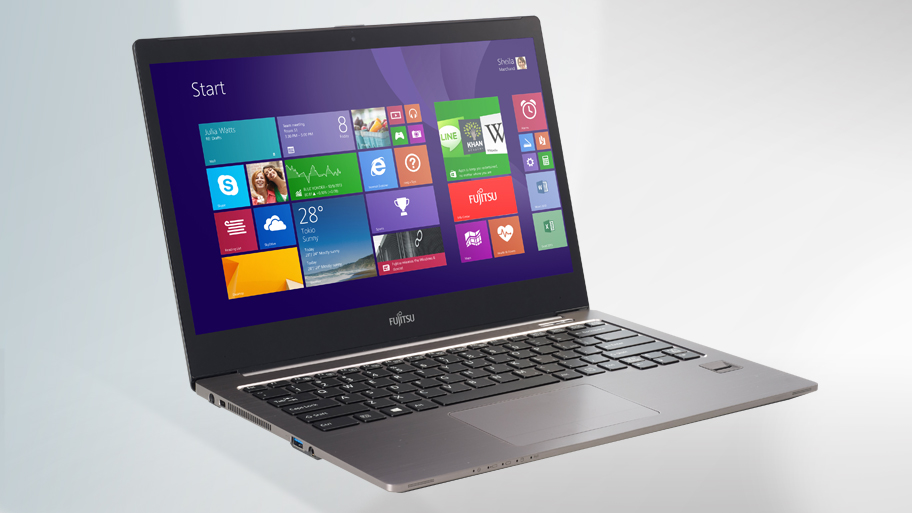Why you can trust TechRadar
Benchmarks
PCMark 8
Home Battery Life Test - 7 hours and 2 minutes
Cinebench
2.17 FPS - CPU; 12.87 FPS - OpenGL
3DMark 8
Ice Storm - 1236
Cloud Gate - 243
Fire Strike - 289
Our model came with Windows 8.1 Pro and an Haswell-based Intel Core-i 4600 CPU clocked at 2.10 GHz turbo boosting to 2.70GHz. Onboard was 10GB RAM, an unusual amount by any measure, showing 9.88GB system memory usable under Windows 8.1 64-bit.
The Fujitsu U904's performance is very fast in regular use mode. Desktop apps such as Firefox, GIMP and iTunes open within seconds thanks to the speedy 128GB SSD, and Windows Store apps such as Halo: Spartan Assault run without slowdown. The Ultrabook booted in around 18 seconds.
Graphics are supported by Intel's HD Graphics 4000, an integrated solution that lacks the power of a discrete graphics chip but allows Fujitsu to make the device as slim as possible. The integrated graphics chip isn't powerful enough to handle demanding games but is capable of running older Source-engine games - such as Team Fortress 2 and Left4Dead 2 - at around 30fps with the resolution lowered to 1920 x 1080 and under 'Very High' detail settings.
Fujitsu claims that the LifeBook U904's battery life can span up to 10 hours, which we found to be something of an optimistic estimate, lasting for around seven hours under PCMark 8's Home Battery Life test, and around eight hours under normal use.

Vein appearance
Fujitsu claims that the Lifebook U904 is the first business Ultrabook to feature a PalmSecure palm vein sensor for authentication, which provides users with a biometric security option for peace of mind and added convenience.
Instead, our test machine came with a fingerprint reader, which is available as an alternative security option, with the sensor located to the right-hand side of the keyboard.
Setting up security was simple and hassle-free. After finding 'Add sign in to PC using your finger' in Windows 8.1's settings, you're then asked to scan your finger multiple times to register your finger print pattern.
We didn't have much success the first time around, with it failing to recognise a pattern during the first eight attempts. It's possible that we were hastily waggling our finger about, as it recognised our fingerprint pattern on the second attempt during the second round of scanning.
After logging out, you're then presented an option to log in using your finger. This is handy for situations where the Ultrabook will be shared between multiple people because you can associate user accounts with unique fingerprints, removing the need to set up different passwords.
We were able to log in on the first try by rolling out finger over the fingerprint scanner. It may take a little practice to get it right - scan your finger too fast or slow and you're given an error message, along with directions to correct your movements - such as slowing down or speeding up.
If the U904 fails to recognise your fingerprint there's also the option to roll back the fingerprint scanner to the traditional password login system. And if biometric security isn't up your street (or you're looking for additional security), Full Disk Encryption (FDE) and a Trusted Platform Module (TPM) are also available.
Current page: Performance, battery life and security
Prev Page Ports and connectivity Next Page Hands on gallery
